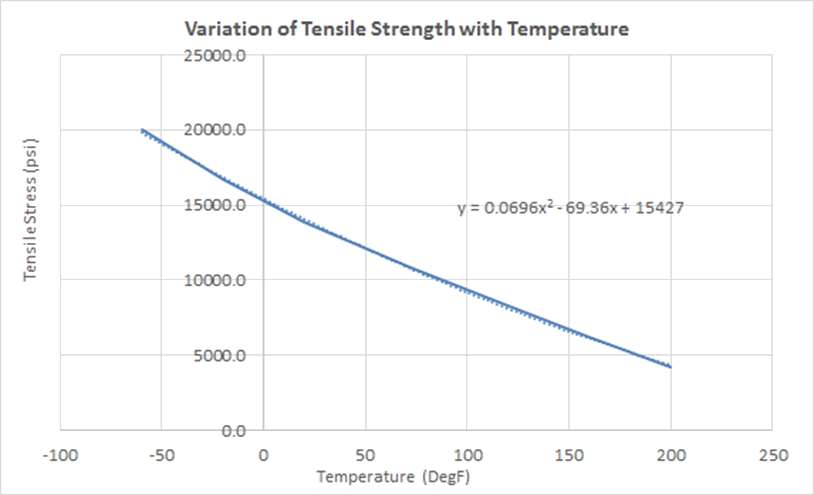A common material used for aircraft windscreens is stretched acrylic (![]() MIL-PRF-25690B, 1960). The strength and stiffness of this material does very significantly with temperature and therefore a conservative approach should be taken when it comes to strength and durability assessments.
MIL-PRF-25690B, 1960). The strength and stiffness of this material does very significantly with temperature and therefore a conservative approach should be taken when it comes to strength and durability assessments.
The following data is taken from, or derived from data presented in (![]() MIL-HDBK-17A, 1973).
MIL-HDBK-17A, 1973).




The strength and stiffness values used for an analysis should either reflect the condition of the material at the environment at which it experiences the critical condition or a conservative approximation.
Stretched acrylic experiences the critical differential pressure load at maximum altitude and minimum temperature. At this condition the material is at the maximum strength and stiffness. As it is unusual to assume the maximum possible strength in a safety of flight or certification analysis.
The conservative minimum strength value from the basic material specification defined in (![]() MIL-P-5425D, 1967) of 8000psi can be used for the ultimate strength allowable. It is common for higher project specific allowable values to be used.
MIL-P-5425D, 1967) of 8000psi can be used for the ultimate strength allowable. It is common for higher project specific allowable values to be used.
A fatigue limit stress of 2300psi, the craze allowable from (![]() MIL-PRF-25690B, 1960) Table III, can be used.
MIL-PRF-25690B, 1960) Table III, can be used.
